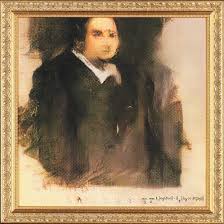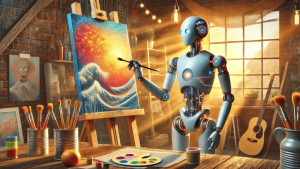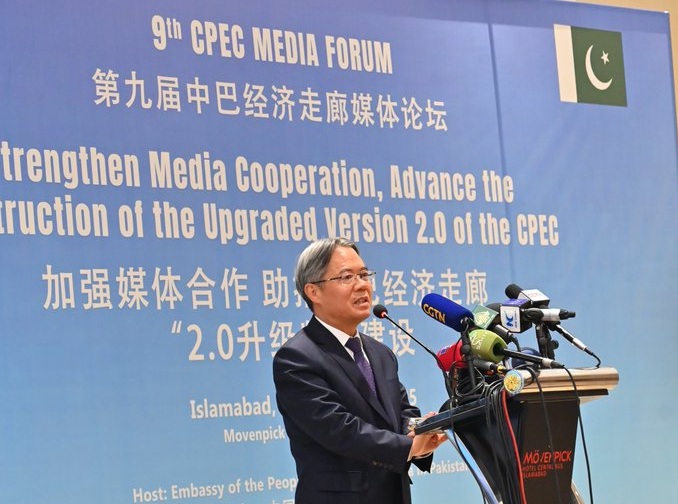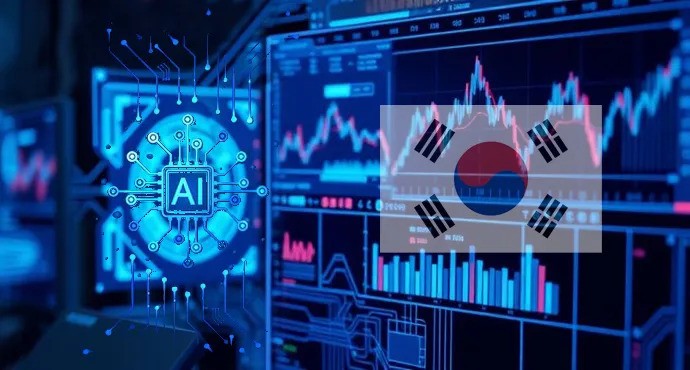
The fusion of artificial intelligence (AI) and art is pushing the boundaries of creativity, challenging our perceptions of what it means to create. As technology advances, AI is increasingly capable of producing artwork that rivals that of human artists. But the question remains: can machines truly be creative, or are they merely following programmed instructions?
The Rise of AI in Art
Artificial Intelligence’s involvement in the art world began to gain traction in the early 21st century, with notable milestones such as the creation of AARON, a computer program developed by Harold Cohen that autonomously creates paintings. Fast forward to today, AI systems like Google’s Deep Dream and Open AI’s DALL-E are generating stunning visuals, while musicians employ AI to compose melodies and write lyrics.

AI in Visual Arts
Artificial Intelligence algorithms analyze vast amounts of existing artwork to learn styles, techniques, and patterns. This data enables AI to generate new pieces that mimic specific styles or create entirely novel ones. For instance, in 2018, an AI-generated portrait titled “Edmond de Belamy” was sold at Christie’s for $432,500, showcasing the commercial potential of AI art.
One of the key technologies driving AI art is Generative Adversarial Networks (GANs). GANs consist of two neural networks, a generator and a discriminator, that work together to create images. The generator creates images, while the discriminator evaluates them. Through this process, GANs can produce highly realistic and imaginative artworks. For example, Google’s Deep Dream uses convolutional neural networks to produce dream-like images by enhancing patterns and features in existing photographs.
AI in Music
In the realm of music, AI composers like Amper Music and AIVA (Artificial Intelligence Virtual Artist) use machine learning to compose original pieces. These systems analyze musical patterns and structures, allowing them to create music that spans various genres and moods. Taryn Southern, a musician, collaborated with Amper Music to produce her album “I AM AI,” highlighting the collaborative potential between humans and machines.
AI’s influence in music isn’t limited to composition. It also extends to performance and production. For example, IBM’s Watson Beat uses AI to assist musicians in generating new melodies and harmonies. Additionally, AI tools like LANDR and eMastered use machine learning to master tracks, ensuring optimal sound quality. These advancements demonstrate that AI can augment human creativity in multiple aspects of the music production process.

The Debate: Can Machines Be Truly Artistic?
The debate over AI’s creativity centers on whether machines can possess the intrinsic qualities associated with human creativity, such as imagination, emotion, and intentionality. Critics argue that AI lacks genuine creativity because it operates within the constraints of its programming and data input. In contrast, proponents believe that AI can exhibit a form of creativity by generating unique and valuable outputs that were not explicitly programmed.
Arguments Against Artificial Intelligence Creativity
- Lack of Intentionality: AI lacks personal experiences and emotions, which are often integral to human creativity. Critics argue that true creativity requires a sense of purpose and emotional depth.
- Replication vs. Innovation: AI often relies on existing data to generate new outputs, leading to concerns that it merely replicates existing styles rather than creating something entirely new.
- Absence of Consciousness: Creativity is often linked to consciousness and self-awareness, which AI does not possess. Therefore, some argue that AI cannot truly understand or appreciate the art it creates.
Arguments For AI Creativity
- Unpredictable Outputs: AI can produce unexpected and innovative results by exploring combinations that a human might not consider, pushing the boundaries of traditional creativity. For instance, DeepArt.io uses neural networks to apply artistic styles to photographs, creating unique and visually striking images that blend elements from different art forms.
- Collaborative Potential: AI serves as a tool that enhances human creativity, enabling artists to experiment with new ideas and mediums that were previously unimaginable. Artists like Mario Klingemann, known for his work with AI and neural networks, have used AI to explore new creative territories and produce thought-provoking art.
Ethical Considerations for Artificial Intelligence
As AI continues to make strides in the art world, ethical considerations arise. One concern is the potential for Artificial Intelligence to replace human artists, leading to job displacement and economic consequences. Additionally, questions about authorship and ownership of AI-generated art must be addressed. Who should be credited for an artwork created by an AI? The programmer, the AI itself, or the person who provided the input?
Moreover, the use of AI in art raises questions about originality and authenticity. Can art created by a machine be considered authentic, or does it lack the human touch that defines traditional art? These questions challenge our understanding of art and creativity in the digital age.
Conclusion
The question of whether machines can truly be creative is complex and multifaceted. While AI may lack the intrinsic qualities of human creativity, it undeniably contributes to the art world in meaningful and innovative ways. As technology continues to evolve, the collaboration between human and machine creativity will likely redefine our understanding of art and the creative process. The art of artificial intelligence has opened up new possibilities for creativity, innovation, and self-expression. As AI technology continues to evolve, we can expect to see even more exciting developments in the world of AI art.
As we navigate this evolving landscape, it is essential to embrace the potential of Artificial Intelligence while remaining mindful of the ethical implications and preserving the human spirit of creativity. The fusion of Artificial Intelligence and art offers exciting possibilities, but it also challenges us to rethink what it means to be creative in a world where machines can paint, compose, and even dream.
By PNP Intern – NAHL MEMON
This post has been submitted by one of our interns. PNP Internship Program is an exciting career opportunity for Pakistani university students to get hands-on valuable experience required in national and international job market.
In order to ensure transparency, accuracy and accountability to our readership, please report whenever any error found or need to clarify /correct the post.



